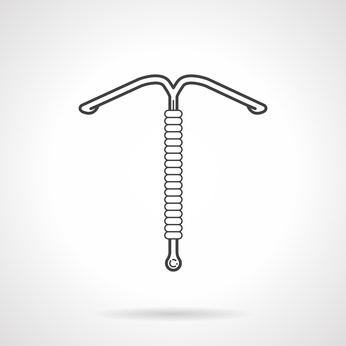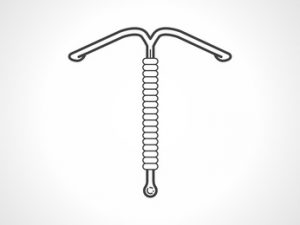
Mirena is a contraceptive intrauterine device used by women to prevent unwanted pregnancy. Mirena offers long-term contraception, for up to 5 years after insertion. Mirena is a T-shaped plastic frame with plastic strings attached. When placed in the uterus, it releases the hormone progestin that makes the cervical mucus more viscous and the endometrium thinner so as to avoid the entry of sperms into the fallopian tubes. Mirena is also considered to suppress the ovulation, partially.
Due to its progesterone content, Mirena became the first-choice treatment for benign irregular/heavy menstrual bleeding at all ages. Within a few months after the insertion, your periods will become lighter and you even might not have any bleeding at all. Once the Mirena is removed, periods will resume.
Another important beneficial of Mirena is in the treatment of Endometriosis where it helps to suppress the endometriosis, reduce pain and bleeding.
Mirena has several benefits over the other contraceptive methods. İt is good for 5 years since insertion. It can be removed at any point of time ensuring the immediate return to fertility. It reduces menstrual bleeding and decreases menstrual pain in about 3-6 months of its insertion. The risk of diseases such as pelvic inflammatory disease, and endometrial cancer is decreased and adverse effects associated with other contraceptive methods containing oestrogen are eliminated.
The use of Mirena may be contraindicated if you have cancers in breast, uterus, cervix and liver or have uterine abnormalities such as fibroids, pelvic infection or pelvic inflammatory disease, vaginal inflammation, or a lower genital tract infection.
Insertion of Mirena is done at your gynaecologist’s office. During the procedure, your gynaecologist will first insert the speculum into your vagina to keep it open. The vagina and cervix are cleaned with an antiseptic solution followed by alignment of the cervical canal and the uterine cavity using appropriate instruments. After this, the depth of your uterine cavity is measured with a tool. Then, your gynaecologist will bend the horizontal arms of the Mirena device and place it inside an applicator tube. This tube will be inserted into your cervical canal and the device will be placed into the uterus, after which the tube is removed. The strings of the device are then trimmed.
It can also be inserted under general anaesthesia for young patients who didn’t have a vaginal delivery in the past or during other procedures such as hysteroscopy or laparoscopy.
Mirena insertion is a quite safe procedure, but some women feel giddiness, experience low blood pressure or slow heart rate. Mirena prevents unwanted pregnancy but does not offer any protection towards sexually transmitted devices.
Possible complications of Mirena insertion are pelvic infection, irregular bleeding during the first few months after the insertion and uterine perforation.

